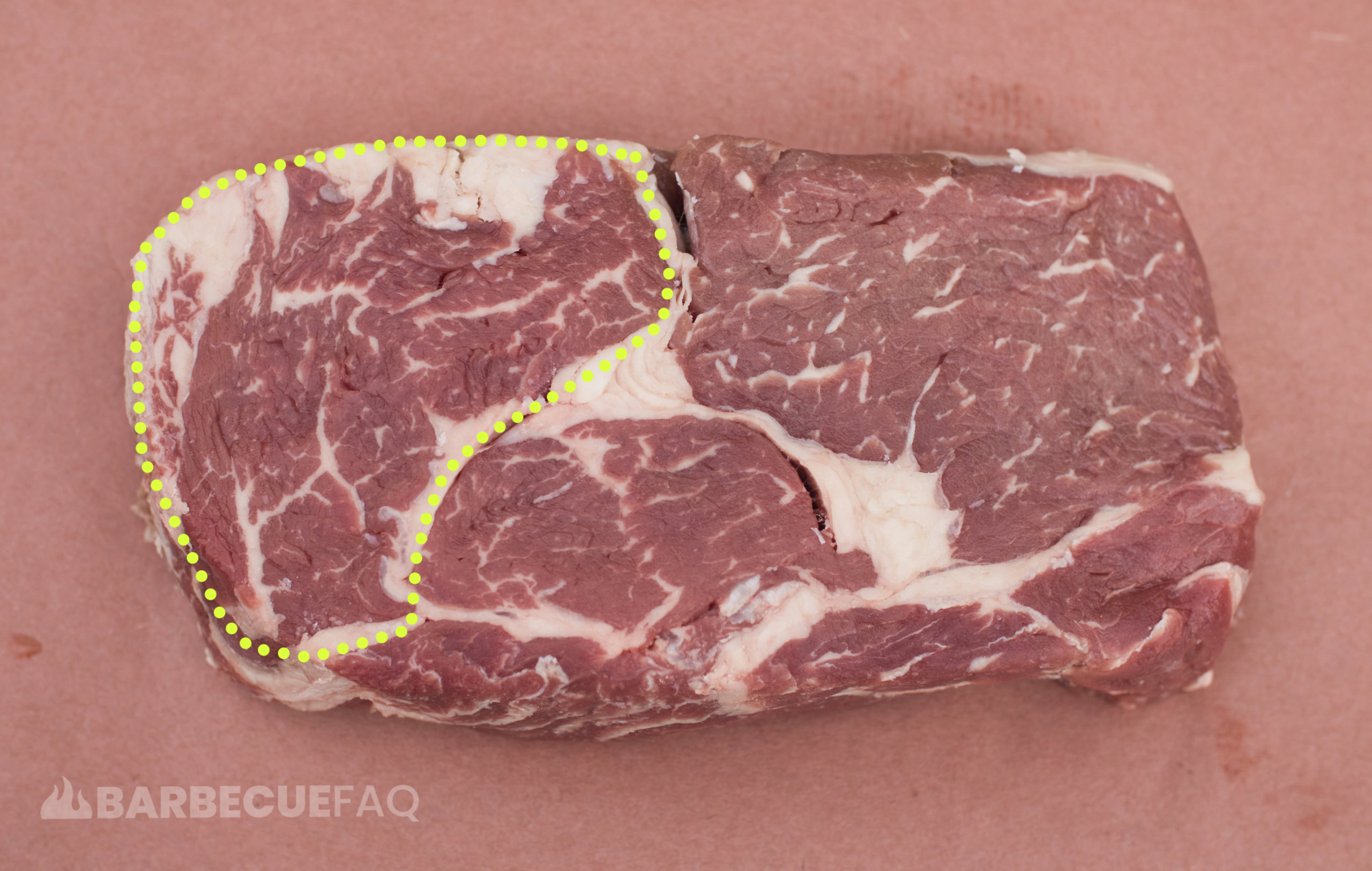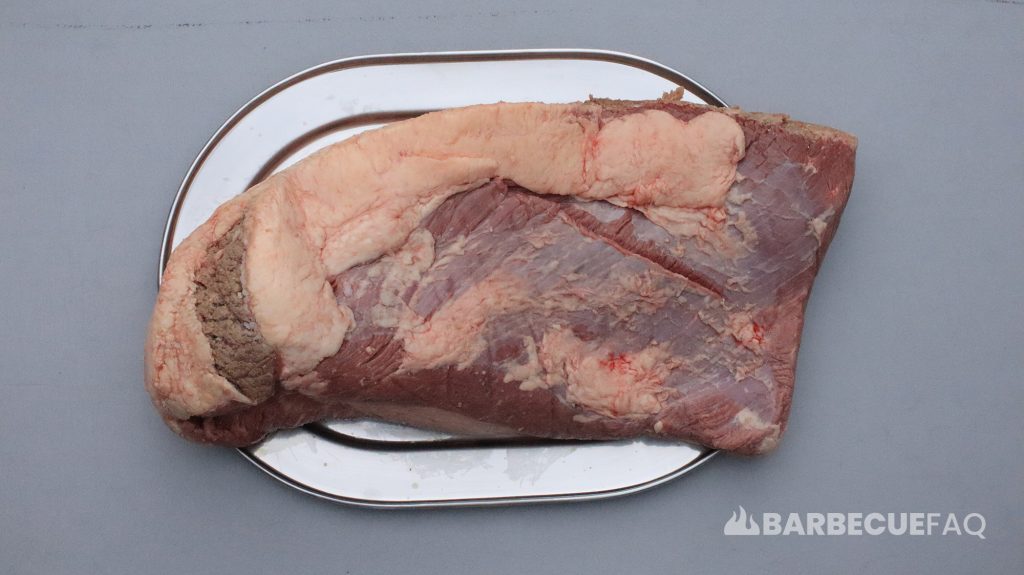To preface this article, it’s important that we define “ribeye” steaks.
Truth be told a true rib “eye” steak only features the center muscle – the eye of the ribeye steak; Scientifically, this is the longissimus dorsi muscle.
This steak is also sometimes referred to as a “ribeye filet.”

Today, the term “ribeye” is now a catch-all to refer to rib steaks taken from the rib primal.
These steaks can be cut to various widths, they can be bone-in or boneless, and can include/exclude various musculature in each cut depending on where the steak was cut from.
A “rib” steak is typically sold bone-in as it features a rib bone.
Where are Ribeye Steaks on a Cow?
Ribeye steaks are essentially the meat from ribs 6 – 12.

These steaks can be cut in a number of ways to produce a few different cuts:
- Thin steaks (less than 1 inch)
- Thick steaks (1.5-2 inches)
- Bone-in – both Cowboy and Tomahawk
- Boneless
The muscles can also be isolated to produce Ribeye filets and the rib cap can be separated to produce a ribeye cap roll.
To help understand this we can look closer at the anatomy or muscle composition of a ribeye steak.
Ribeye Steak “Anatomy” and Muscle Composition
The main muscles that make-up the average ribeye steak are:
- Longissimus Dorsi – Eye of Ribeye
- Spinalis Dorsi – Ribeye Cap
- Complexus
- Longissimus Costarum – Lip or Nose
1. Longissimus Dorsi or the “Eye” of the Ribeye
All ribeye steaks will have an eye – it’s quite literally the center (eye) of the cut.
It is the meatiest part of the entire rib sub-primal.
Beef grades like “Prime, Choice, and Select” are assigned based on the marbling in this muscle @ the 12th/13th rib.

2. Spinalis Dorsi or the “Cap” of the Ribeye
Every ribeye muscle will have some form of cap. This cap muscle can be minimized and maximized based on where the rib steak was taken from.

Rib steaks 6, 7, and 8, have larger caps, where-as rib steaks 9, 10, 11, and 12 have bigger eyes.
This is what differentiates 1st and 2nd cut prime rib; On a prime rib you want a bigger eye and a smaller cap so meat from 9, 10, 11, 12.
3. Complexus
The complexus muscle is the smallest muscle on the ribeye and in some cases, may not even be present on the steak.

For instance, if the ribeye steak was taken from the front of the steer, the complexus muscle would be smaller than if it came from the middle.
To illustrate, here’s rib steak number 9; As we can see there is no complexus muscle:

Conversely, as you go further towards the front of the cow, the “Eye” muscles don’t exist (ribs 1, 2, 3) won’t start to show up until rib number 4.
Either way, at most you’ll only get 1-2 bites from this muscle.
In terms of taste, it’s very similar to the ribeye cap.
4. Longissimus Costarum or the “Lip/Nose” of the Ribeye
In a lot of cases, the lip or nose is removed from the ribeye steak – which is a shame because it’s great meat.
However, if you buy a bone-in ribeye steak, there’s a really good chance it’s still attached to the bone – as is the case with Cowboy or Tomahawk steaks.

Some folks who like ribeye (a lot) will wholeheartedly say this is their favorite part of the steak. Citing that since it’s the closest to the bone it has more flavor.
In my opinion, that’s not really the case.
It’s actually because this part has more fat surrounding fat. In a similar to the cap and nose which have swaths of fat that separate them.
This is also the reason this muscle is usually removed as most consumers don’t like buying fat and it doesn’t tend to render well.





2 comments
Stephen W Franchi
Thank you
Dylan Clay
Happy to help Stephen!